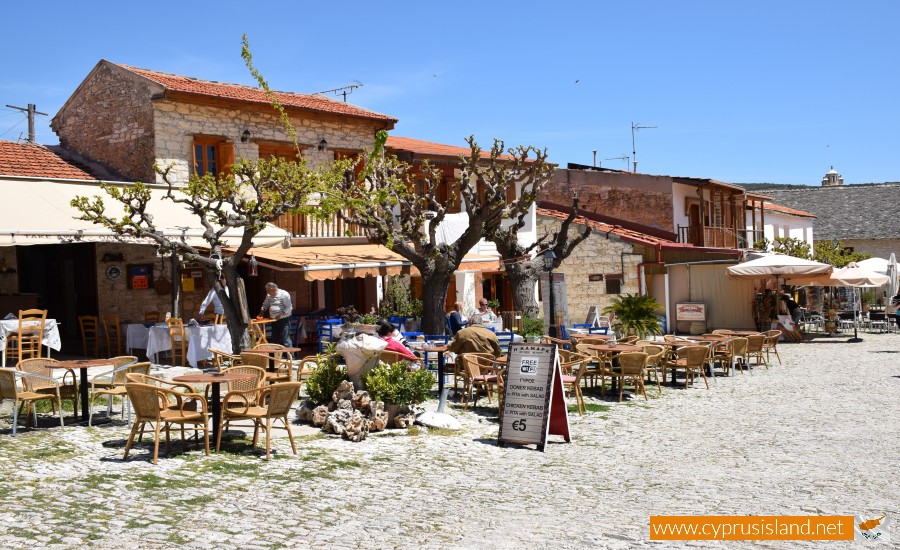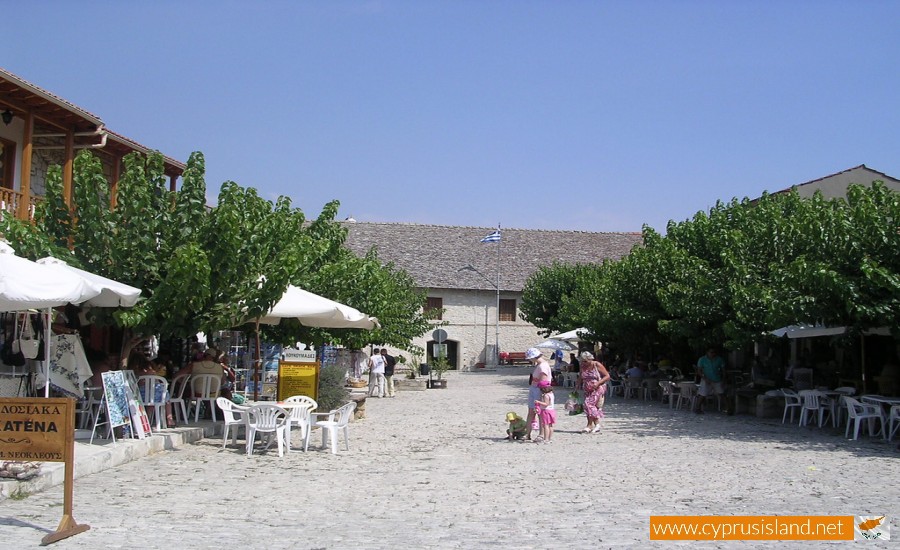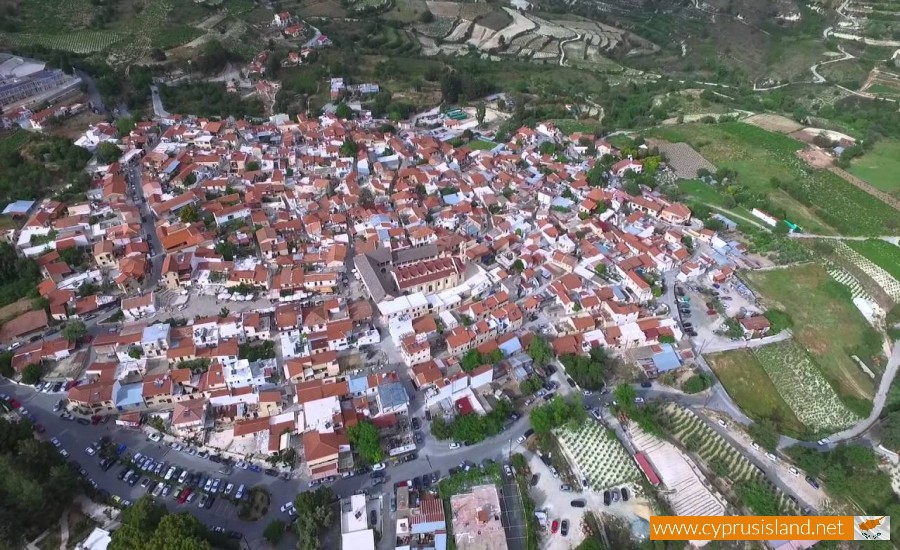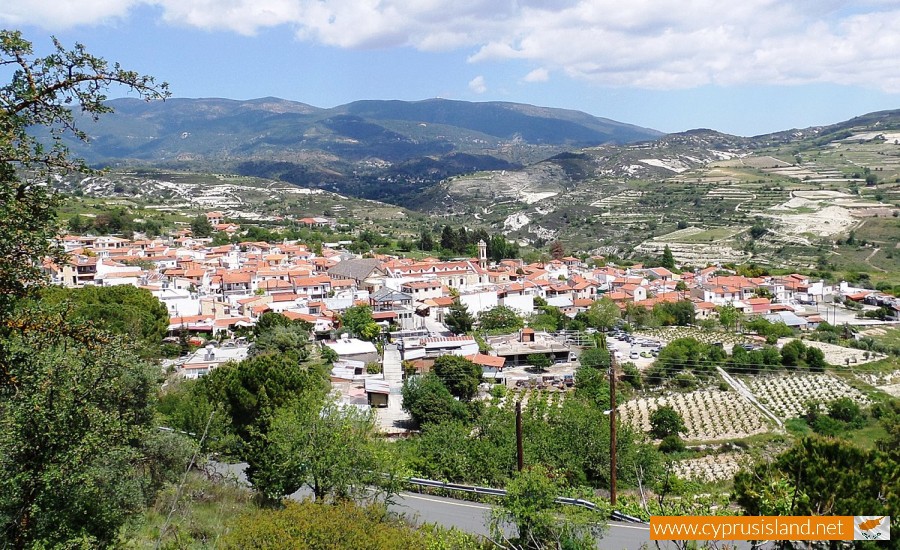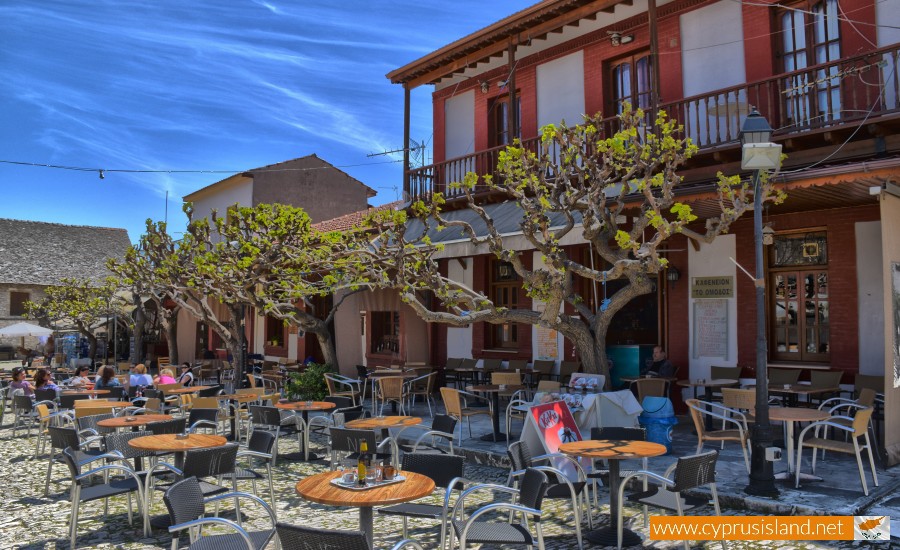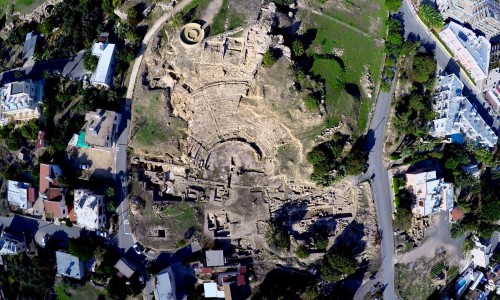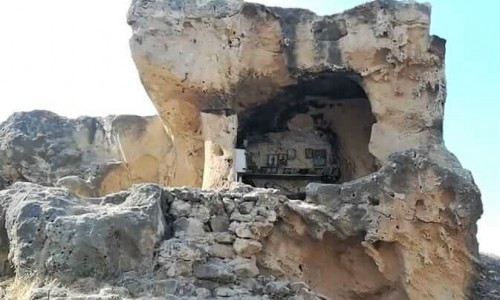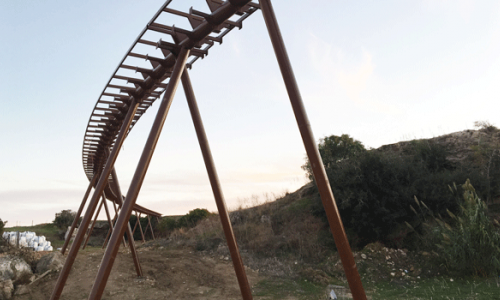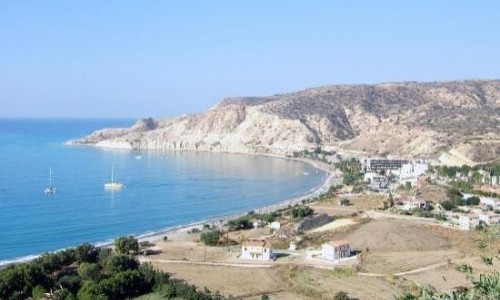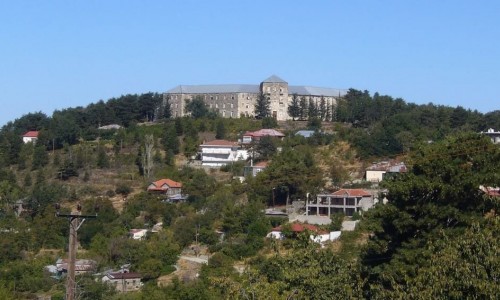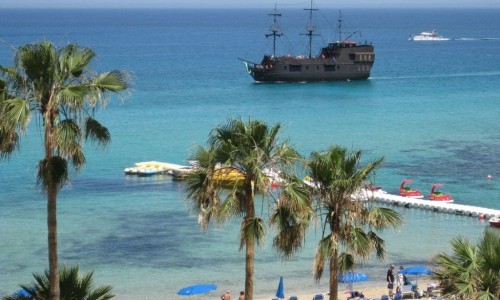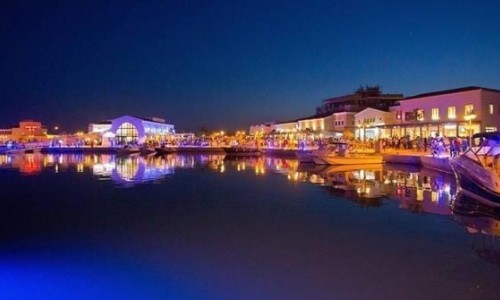Omodos Village
Nestled within the gentle folds of the Troodos Mountains, Omodos is one of Cyprus’s most picturesque and historically rich villages. Just a short drive from Limassol (about 40 km northwest), this enchanting village in the Krasochoria (wine-producing villages) region invites you to step into a world where tradition, nature, and culture seamlessly blend.
Omodos dates back to the Byzantine period, with its roots tightly woven into the island’s Christian heritage. Legend has it that the village was formed around a miraculous event—the discovery of a fragment of the Holy Cross. This relic is still housed in the Monastery of the Holy Cross (Timios Stavros), a central landmark in the village.
The monastery, one of the oldest and most revered in Cyprus, is believed to have been founded by Saint Helena in the 4th century AD. Its grand stone facade, intricate woodwork, and peaceful courtyards offer both spiritual reverence and architectural beauty. Inside, you’ll find religious icons, ancient manuscripts, and a deep sense of Cyprus’s Orthodox identity.
Wandering through Omodos feels like stepping back in time. The narrow cobbled streets, traditional stone houses with colorful shutters, and flower-filled balconies all preserve the authentic charm of the past. There’s a sense of serenity here—cars are few, the air is clean, and every turn leads to a quiet courtyard or an artisan’s workshop.
Omodos has done an exceptional job of balancing its cultural heritage with modern-day tourism. Many of the homes have been transformed into boutique guesthouses, wine cellars, and small museums, keeping the village alive and economically sustainable without sacrificing authenticity.
Omodos is a proud part of Cyprus’s wine country, particularly renowned for its production of Commandaria—one of the world’s oldest named wines still in production. The dry mountain climate and limestone-rich soil create ideal conditions for vineyards, and many local families have been cultivating grapes for generations.
Wine tasting is a must when visiting Omodos. Numerous local wineries open their doors for tastings, where you can sample everything from light whites and robust reds to sweet dessert wines. Look out for local varieties like Xynisteri and Mavro, as well as traditional zivania, a strong Cypriot pomace brandy.
The village is also known for its lace-making, particularly a style called “pipilla”, a fine handmade lace once prized by European aristocracy. Women can still be seen crafting lace outside their homes or at local workshops—an art passed down through generations.
You’ll also find shops selling locally made products like honey, carob syrup, olive oil, handmade candles, herbs, and traditional sweets such as “shoushoukos” (a chewy treat made with grape must and nuts). These make for perfect souvenirs or gifts from your journey.
Despite its quiet demeanor, Omodos is vibrant with cultural activity. The village hosts festivals throughout the year, the most famous being the Wine Festival in August, celebrating the grape harvest with music, dancing, food, and of course—plenty of wine. Religious celebrations, especially for the Holy Cross on September 14th, also draw locals and pilgrims alike.
Music, folklore, and Cypriot cuisine come alive during these events, offering an unforgettable window into the island’s soul. Visitors are always welcome to join in and are often swept up by the hospitality and joy of the locals.
Surrounded by vineyards, pine forests, and nature trails, Omodos is also a great base for outdoor enthusiasts. You can take short hikes to nearby villages like Vasa or Mandria, enjoy panoramic views from the hills, or explore nature trails in the Troodos National Forest Park.
In spring, the landscape blooms with wildflowers; in autumn, vineyards turn gold and crimson—a photographer’s dream. And during winter, Omodos becomes a cozy retreat just a short drive from the snow-covered peaks of Mount Olympus
Omodos isn’t just a destination—it’s a feeling. A place where time slows down, where you sip wine in a sun-drenched courtyard, hear church bells echo through the valley, and discover beauty in simplicity. Whether you’re a history buff, a foodie, a spiritual seeker, or simply a traveler in search of something real, Omodos offers a slice of Cyprus that touches the heart.
Tips for Visitors
Best time to visit: Spring (April–May) and autumn (September–October) for mild weather and colorful scenery. August for festival lovers.
What to try: Commandaria wine, souvlaki from the village tavernas, freshly baked olive pies.
Getting there: A car is recommended. Omodos is about 40 minutes from Limassol and just over an hour from Nicosia or Paphos.
Don’t miss: A visit to the Monastery of the Holy Cross and a sunset walk through the vineyards.


